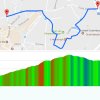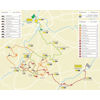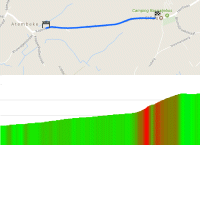With the Wall of Geraardsbergen and Bosberg inside the last 20 kilometres the Omloop serves the old finale of the Tour of Flanders for the fourth consecutive year. The revamp of 2018 led to compelling racing on all three occasions since then, with Michael Valgren (2018) and Zdenek Stybar (2019) winning after late attacks, and Jasper Stuyven outgunning Yves Lampaert in a two-up sprint in 2020.
The 2021 parcours is similar to least year’s. The route also features nine cobbled sectors, which adds up to 14 kilometres.
Climbing begins after 50 kilometres on the Leberg (950 metres at 4.2%) and 25 kilometres Den Ast (450 metres at 5.5%) is the second ‘helling’ of the day. Around the midway the marker the riders crest the Katteberg (600 metres at 6%) and from then on the race intensifies with every 10 kilometres or so another hill. Leberg (950 meter at 4.2%), Hostellerie (1,300 metres at 4.5%), Valkenberg (540 metres at 8.1%) and Wolvenberg (645 metres at 7%) follow in quick succession.
After the cobbles of the Mater the finale is well underway and five hellingen appear at even shorter intervals. Within 12 kilometres the riders tackle the Molenberg (463 metres at 7%), Leberg (950 metres at 4.2%), Berendries (940 metres at 7%) and Elverenberg-Vossenhol (1,268 metres at 3.6%).
Still 28 kilometres to go when the Omloop heads for the one-two punch of the Wall of Geraardsbergen and Bosberg. The steep and cobbled Wall is just 475 metres long, but averages 9.3% and peaks out at almost 20%. No time for a breather at the top, as the Bosberg appears 3 kilometres later. The partly cobbled climb is 980 metres long and slopes at 5.8%.
After that final test comes a 12.8 kilometres run to the finish line in Ninove.
Another interesting read: results 2021 Omloop Het Nieuwsblad.
Omloop Het Nieuwsblad 2021: route, profiles, more
Click on the images to zoom




